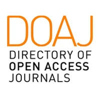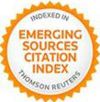Abstract
Documentation of architectural and archaeological heritage must be a multidisciplinary approach that enables analysis and interpretation from many fields of expertise. Nowadays, the representation of the architectural/archaeological survey represents a monumental change in capabilities thanks to the acquisition and alignment of massive survey data describing the geometry, appearance and context of the target environments. The construction of models is the point of departure for essential activities – from cataloguing to preservation, from design to restoration and valorization – linked to the knowledge of Cultural Heritage. The presented research focuses on the control over data quality from massive 3D acquisition, in terms of metric accuracy, by comparing 3D image-based acquisition methods with consolidated methods, in order to present the enormous potentialities inherent in models obtained through 3D surveys.
Keywords
Full Text:
PDFDOI: http://dx.doi.org/10.2423/i22394303v7n1p57
References
Article Metrics
Metrics powered by PLOS ALM
Refbacks
- There are currently no refbacks.
Copyright (c) 2017 Martina Attenni, Cristiana Bartolomei, Michael Hess, Alfonso Ippolito

This work is licensed under a Creative Commons Attribution-NonCommercial-NoDerivatives 4.0 International License.
SCIRES-IT, e-ISSN 2239-4303
Journal founded by Virginia Valzano





